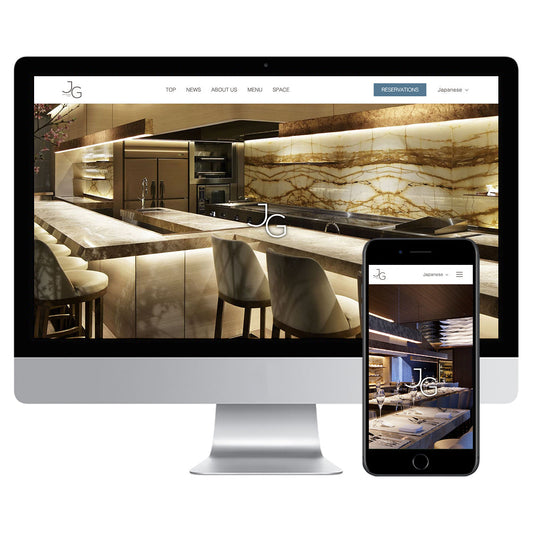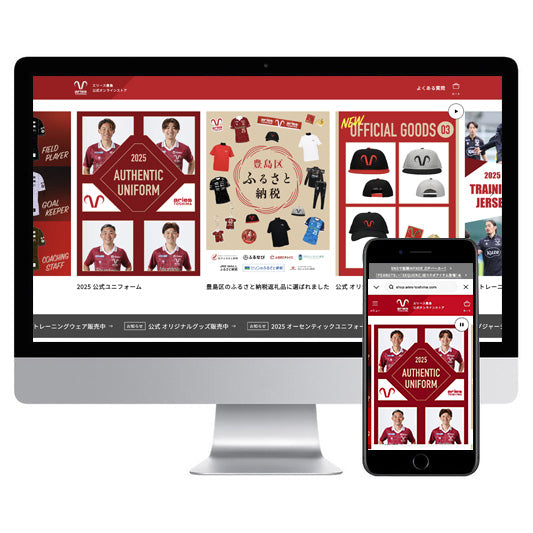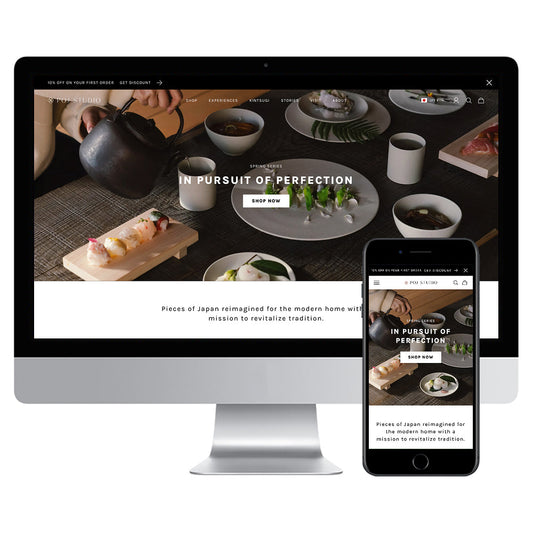The EC market continues to expand year by year, and many businesses are strengthening their own EC sites. One platform that is attracting particular attention is the Canadian EC platform "Shopify." Due to its flexible customizability, high operability, and global compatibility, the number of companies adopting it in Japan is rapidly increasing.
However, when introducing Shopify, many companies face the problem of "who will be in charge of construction and how?" Whether to do it in-house or outsource (to a Shopify construction partner) -- the choice you make will make a big difference in the speed of construction, the completeness of the site, and the stability and freedom after operation begins.
This article provides a comprehensive explanation of the main methods for building a Shopify website, comparing the features, advantages, and disadvantages of each, and providing information to help companies choose the best construction style for their company.
1. Organizing Shopify construction patterns
1-1.What is Shopify construction?
Shopify construction refers to the process of launching your own e-commerce website using Shopify. The construction process includes the following tasks:
- Create a Shopify account and choose a plan
- Selecting and customizing a design template (theme)
- Product registration and category (collection) design
- Basic configuration such as payment method, shipping settings, and consumption tax settings
- Introducing external apps and SNS integration
- Domain settings and SEO basic settings
Depending on the size of your business and the stage of growth, you may also consider introducing Shopify Plus. This is an enterprise plan for large-scale sites, and it offers relaxed API restrictions, B2B functionality, and multi-store operations.

Please contact us for consultations regarding building and customizing your Shopify Plus store. You can build a unique e-commerce site with a high degree of freedom, including integration with external systems and advanced customization. We can also provide operational support such as site management and updates after launch, and order and logistics agency services.
1-2. Three patterns for building Shopify
There are three main ways to build Shopify:
1. Build it yourself (in-house)
This method allows in-house staff to select and customize the theme, register products, and make various settings. This method allows you to keep costs down while taking advantage of Shopify's intuitive UI and extensive official guides.
2. Leave it to your partner
This is a method to outsource the construction of your website to Shopify construction experts or production companies. You can utilize professional knowledge such as UI/UX design, SEO optimization, and design branding to build a high-quality website.
3. Hybrid type
This is a construction method in which part of the design and development is handled in-house and the rest is outsourced to an external partner. For example, your own designer may be in charge of site design and a production company may be asked to implement Shopify (coding), or conversely, you may outsource the design to an external partner and incorporate themes and register products in-house.
2. How to build a Shopify site in-house and the key points for success
Shopify offers a "no-code" admin panel and a wide variety of official themes and apps, so even if you don't have specialized knowledge of web development, you can build a reasonable e-commerce site yourself. Here, we will explain the specific steps for building your own Shopify site and the key points for success.
2-1. Steps for building your own system
Below are the general steps for building your own.
- Open a Shopify account: Take advantage of the 14-day free trial on the Shopify official website and start building your account.
- Choose and customize a theme: Choose a free or paid theme and adjust the logo, colors, fonts, etc. to match your brand. The theme editor makes it easy to make changes.
- Product registration and collection settings: Enter the product name, image, price, stock quantity, variations, etc. Categorize products into "collections" by category to make them easier for users to find.
- Payment and shipping settings: Set up payment methods such as credit card, convenience store payment, Apple Pay, etc. Also set shipping rules and consumption tax.
- Introducing apps: If necessary, we will introduce apps such as those for displaying reviews, linking to social media, providing marketing support, and chatbots.
- Test order and release: Place a test order once to check that the cart, payment, email notifications, etc. work properly. Then, proceed to the live release.
2-2. Advantages of building your own Shopify
The main benefits of building your own are:
- Low initial costs: Since there are no outsourcing costs, it is suitable for starting on a small scale.
- Accumulation of in-house know-how: Through the setup, you will gain basic knowledge of EC management, making it easier to respond to future improvements and feature additions.
- Flexible response: Because it is built and operated in-house, we can quickly respond to campaign initiatives and page revisions even after publication.
2-3. Disadvantages and points to note about building your own Shopify
At the same time, the following issues require attention:
- Design/UI limitations : No-code theme customization is limited, so you’ll need to know how to code to make it unique.
- SEO optimization : It can be quite difficult to take into account elements such as structured data.
- Decline in quality due to lack of resources : If there are no dedicated web staff in-house, there is a risk that the site will not turn out as you had imagined.
2-4. Companies suitable for building their own Shopify
Building your own system is a good option if the following conditions apply to you:
- I want to start an EC business with a small start
- I have a limited budget and want to gradually expand the functionality
- I want to use the EC site as a learning opportunity.
3. How to hire a partner to build your Shopify site and what criteria to use
The option of entrusting the construction of Shopify to a partner is effective for companies that do not have staff with specialized skills in EC, or for companies that prioritize launch speed and completeness. In this section, we will explain how to choose a partner, the advantages and disadvantages, and the characteristics of a suitable company.
3-1. Types of partners
There are several types of partners you can trust to build Shopify.
- Production company (web production company/development company): A company that specializes in the production of websites in general. In many cases, they can provide one-stop service for design, coding, SEO, etc. While they often have excellent design skills, they may not have much knowledge of e-commerce or experience building e-commerce sites.
- Shopify Partner (Officially Certified Partner): A Shopify construction expert with e-commerce knowledge and certified by Shopify. To receive certification, you must have a certain track record in Shopify construction, so they are the most reliable partner to ask for Shopify construction. Commerce Media has been recognized as a Shopify Premier Partner, one of only a few companies in Japan, for its high technical capabilities, track record, and contributions to customers among Shopify Partner companies.
- Freelance creators: You can expect costs to be kept down and a flexible response, but you need to be careful about quality and delivery deadlines.
3-2. Benefits of hiring a partner
The biggest advantage of hiring a partner is that you can take advantage of their professional knowledge to create a high-quality website.
- Branding and design : With an excellent UI/UX design, you can expect to reduce bounce rates and improve conversions.
- SEO and technical support : We also support structured data, meta tag optimization, and more.
- Feature suggestions optimized for B2C : Features and apps are suggested based on industry best practices.
- You can also entrust operation and maintenance to us : There are many partners who can handle ongoing corrections and updates, as well as marketing support.
3-3. Disadvantages of asking a partner
There are some things to keep in mind when hiring a partner:
- Initial cost : In some cases, costs can range from hundreds of thousands to hundreds of thousands of yen, and fully customizing the design can be particularly expensive.
- Requirements need to be aligned : If the requirements are unclear, there may be a gap between expectations and the final product. Also, since it may be difficult to make modifications in-house after delivery, it is important to check the operation manual.
3-4. Companies suitable for building with partners
Companies that have the following characteristics are well suited to building with a partner:
- There are no dedicated web/design staff in the company
- There are no staff members with knowledge of EC in the company
- Want to launch a high-quality EC site?
- We are considering marketing measures linked to advertising, CRM, etc.
- You want a more advanced setup, such as Shopify Plus
4. Criteria for choosing a Shopify building method
Now that we understand the characteristics of building your own system or working with a partner, we can organize the criteria for your final choice.
4-1. Selection criteria based on comparison table
| item | In-house construction | Outsourced Construction |
|---|---|---|
| Initial cost | ◎ Can be suppressed |
△ Can be more expensive than building your own |
| Build Speed | △ It takes time if you're not used to it |
◎ Completed in a short time by experts |
| Design freedom | △ Limited to the scope of the topic |
◎ Full customization also available |
| SEO and speed measures | △ Know-how required |
◎ Professional support |
| Accumulation of in-house know-how | ◎ Knowledge is accumulated within the company |
△ Higher external dependency |
| Flexibility after operation | △ Can be changed quickly but requires knowledge |
△ Partner request required |
4-2. Summary of decision points
When choosing a construction method, it is important to objectively assess your company's situation from the following perspectives:
- Consistency with your company's EC strategy: The construction approach will differ depending on whether you want to generate sales in the short term, consider a design aimed at efficient operation, or prioritize long-term branding.
- In-house resources and skill sets: The hurdles to construction vary greatly depending on whether or not you have experience in e-commerce site production and marketing.
- Budget and ROI: Even if the initial costs are higher, outsourcing may be more efficient if it offers higher long-term conversions and LTV.
- Growth strategy stage: The level of precision required will vary depending on whether you are in the verification/experimental stage or the full-scale deployment phase.
Conclusion: Choose Shopify based on your purpose and structure
There are clear advantages to both building a Shopify store in-house and entrusting it to a partner. The important thing is to clarify "why you want to launch an EC store" and "who will operate it and how," and then choose the most suitable method.
Whether you build it yourself or choose a partner, the key to success is not just "building it and being done," but "how you operate and improve it." Don't forget that early choices will have a big impact on your future growth, so proceed carefully.
Recently, we have been receiving more and more inquiries such as "We made it in-house but there are problems and we can't fix it" and "We had a production company make it for us but it's hard to use and sales aren't increasing." If you are considering site construction, operation, or consulting support for Shopify, please feel free to contact us.





